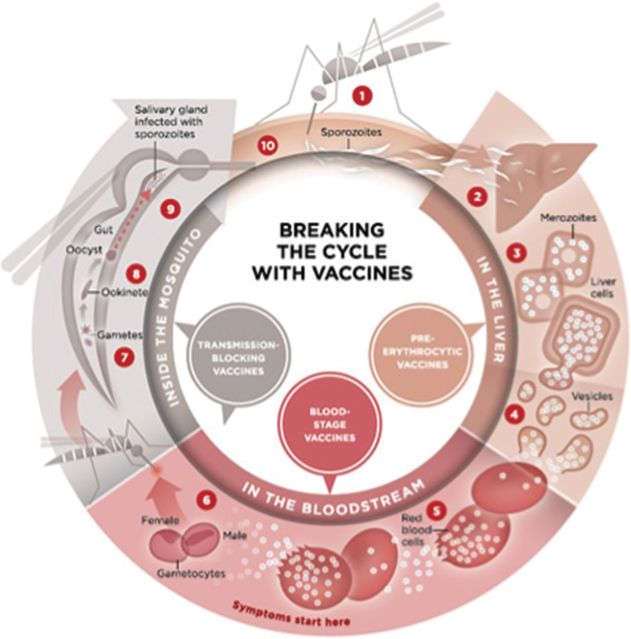Figure 1.
Life cycle of the malaria parasite. (1) Malaria infection begins when an infected female Anopheles mosquito bites a person, injecting Plasmodium parasites in the form of sporozoites, into the bloodstream. (2) The sporozoites pass quickly into the human liver. (3) The sporozoites multiply asexually in the liver cells over the next 7–10 days, causing no symptoms. (4) In an animal model, the parasites, in the form of merozoites, are released from the liver cells in vesicles, journey through the heart, and arrive in the lungs where they settle within lung capillaries. The vesicles eventually disintegrate, freeing the merozoites to enter the blood phase of their development. (5) In the bloodstream, the merozoites invade red blood cells (erythrocytes) and multiply again until the cells burst. Then they invade more erythrocytes. This cycle is repeated, causing fever each time parasites break free and invade blood cells. (6) Some of the infected blood cells leave the cycle of asexual multiplication. Instead of replicating, the merozoites in these cells develop into sexual forms of the parasite, called gametocytes, that circulate in the bloodstream. (7) When a mosquito bites an infected human, it ingests the gametocytes, which develop further into mature sex cells called gametes. (8) The fertilized female gametes develop into actively moving ookinetes that burrow through the mosquito's midgut wall and form oocysts on the exterior surface. (9) Inside the oocyst, thousands of active sporozoites develop. The oocyst eventually bursts, releasing sporozoites into the body cavity that travel to the mosquito's salivary glands. (10) The cycle of human infection begins again when the mosquito bites another person.
Source: PATH–Malaria Vaccine Initiative.

